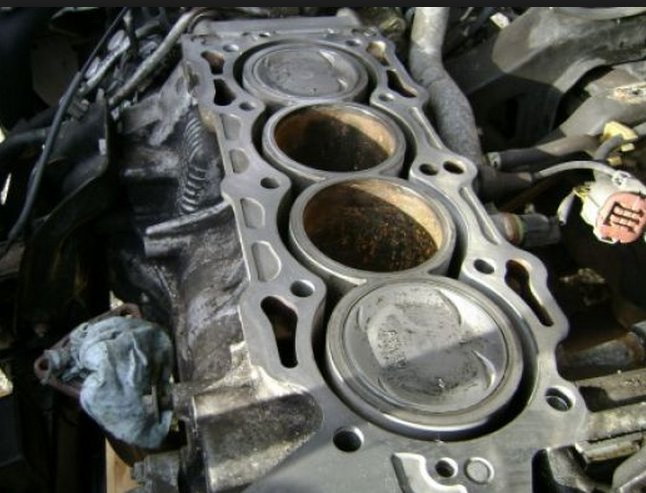Toyota Camry 2002-2006: Common Engine Problems
If your engine is acting up, you've got a problem somewhere. If your experiences match these, you might be in for a dozy. Education is power, so get to reading and learn about some of the Camry's foibles.
This article applies to the 5th generation Toyota Camry (2002-2006).
If you’re driving a 2002 to 2006 Toyota Camry, there are common engine problems that can come up that must be fixed right away to avoid severe engine damage. They might start with common signs, such as using up engine oil faster than normal. Here are three warning signs to watch for, and ways to prevent more damage by fixing the problem.
Component Breakdown
Warning Sign 1 – Burning oil
Your Camry may be burning oil, which can be seen in the exhaust or might not be visible at all. You might have to add another quart of oil every 200 to 300 miles. Measure your oil consumption; as per Toyota, consuming one quart per 1,000 miles (1,600 kilometers) can be considered normal, especially as an engine ages and tolerances loosen up.
Toyota has acknowledged a design flaw in the four-cylinder engine and issued a service bulletin for warranty repairs; although, this car is long out of warranty. The engine will need an engine overhaul with new pistons and rings. The problem may come from the actuator system, which is prone to plugging its oil passages. There is a screen inside one of these oil passages that can plug up. If that’s the case, make sure the screen is clean.
Burning oil has a plethora of side effects, and while some are harmless, others not so much. The big one is that excessive oil blow-by that can ruin catalytic converters. The converter may have been badly damaged by the large volume of burned oil passing through exhaust, and the converter may need to be replaced. Emissions equipment isn't cheap, so an ounce of prevention is worth a pound of cure.

Warning Sign 2 – Blown head gasket
You’re likely driving a Camry with 70,000 or more miles on the odometer by this point. If the head gasket has blown, it may still be under warranty and it’s something you’ll need to find out to avoid a high cost repair. A blown head gasket is very obvious, even to the untrained eye; your vehicle will likely overheat, blow white smoke from the tail pipe, and eventually stop running altogether.
A car with about 70,000 miles should not be leaking or consuming coolant. If there were no external signs, then you would be right to assert that the head gasket blew because of a manufacturer’s defect. Take pictures of the engine just the way they gave it to you and of the individual parts. If you need to rent a car, keep all your receipts because that is refundable to you in court.
Try to get the dealer to do the job based on the lifetime warranty. If this doesn’t work, go to a well-established and trusted private shop to have them do an inspection of your problem. The dealer might not be willing to identify the problem. You can also go online to the Better Business Bureau website and see if there were any judgments against this dealership.

Warning Sign 3 – Major oil leak
You might notice that one day your Camry suddenly springs a major oil leak. According to a Toyota dealer, that’s coming from the VVT-i line.
The Variable Valve Timing with intelligence (VVT-i or sometimes called VVT) piping system supplies oil to the camshaft rotation system. The pipe should not break down, and isn’t included in the replacement section for scheduled maintenance. Camry owners do face this problem and might need to take action beyond warranty coverage to get it resolved.
Owners having this same problem appear to have routinely denied warranty repairs if the piping system leaks after 36,000 miles. Dealers have a lot of leeway in making repairs, and have funds set aside for goodwill repairs. Ask them to fix the problem for you, and they may do it out of goodwill with the hope of keeping you as a customer. Toyota has issued a Technical Service Bulletin (TSB) for the issue, so this is a known thing that can occur to your Camry's engine. If your friendly and the local dealership isn't, don't be afraid to push back with information regarding the contents of the TSB.
If this problem continues, you might want to do some research via Goggle and other sites like CamryForums. Document it if this problem is happening to other owners. You might also consider talking to the dealership's General Manager or even the owner. Some states have arbitration available; if you can make the case, the repairs should be covered under warranty.

Scheduled Maintenance
Preventive Maintenance at 5,000 Miles Intervals
Driving on Rough, Muddy or Snow-Melted Roads:
- Inspect ball joints and dust covers
- Inspect brake linings/drums and brake pads/discs
- Inspect drive shaft boots
- Inspect nuts and bolts on chassis and body
- Inspect steering linkage and boots
- Rotate tires
Driving on Unpaved or Dusty Roads:
- Inspect brake linings/drums and brake pads/discs
- Inspect engine air filter
Extensive Idling or Low-Speed Driving for Long Distances:
- Inspect brake linings/drums and brake pads/discs
Towing a Trailer or Using a Camper or Car-Top Carrier:
- Inspect brake linings/drums and brake pads/discs
- Inspect nuts and bolts on chassis
Related Discussions
- VVTi Actuator Malfunction - CamryForums.com
- Blown Head Gasket - CamryForums.com
- Huge Oil Line Leak - CamryForums.com
- VVT Line Ruptured - CamryForums.com






